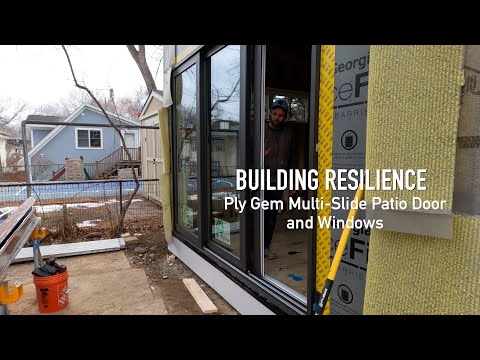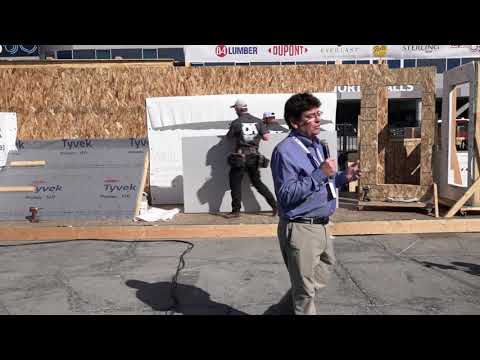Gender stereotypes are common on construction sites, as is gender discrimination in our industry. Gender bias in construction goes beyond men harassing women. Solving the construction labor crisis will require business owners to adopt strategies to welcome a broader spectrum of people into the workforce.
The following is a lightly edited transcript of a recent Career Toolbox podcast episode featuring Kate Stephenson and Mel Baiser of Helm Construction Solutions. We previously published an article about this topic, which includes a variety of resources to help construction business owners create more inclusive workplaces.
The following is a lightly edited transcript of a recent Career Toolbox podcast episode featuring Kate Stevenson and Mel Baiser of a download of Helm Construction Solutions' Harassment Policy.
TRANSCRIPT:
Fernando: Welcome back to ProTradeCraft's Career Toolbox, where we help you turn your day job into a career. This is Don Fernando, your host, and my pronouns are his/him.
Today's topic is Breaking Down Gender Bias, A Toolkit for Construction Business Owners. Why? The construction trades have long been one of the industries with the lowest percentage of women in the workforce. Fewer than 4% of workers in the construction trades are women. Data on the percentage of gay, lesbian, bisexual, transgender, and queer workers is not available, but no doubt it's also very low.
In part, this may be because the trades have not always been a friendly place for women and LGBTQ workers, who face bullying and discrimination as a result of sexism, homophobia, and transphobia in our industry's predominantly male-oriented workplace.
Our guests today, Kate Stevenson and Mel Baiser, have developed what they call a toolkit for breaking down jobsite gender bias. We all love tools, so we will open this toolkit and see what's inside. Welcome Kate and Mel.
Mel: Thank you. Thanks, Fernando. Fernando. Mucho gusto.
Fernando: Mucho gusto. Thank you for being here. Mel, as you can hear, has spent many years living in Latin America, and I just learned that today. Quite an interesting background.
Importance of workplace inclusivity for skilled labor jobs
But let's start this discussion with cold practicality. Why change workplace culture to embrace inclusivity?
Kate: Well, construction, in general, has just had a reputation for not being a very welcoming, great work environment. We know that we can and that we really need to do better to attract people to work in the trades. That's not just about diversity and inclusion. That's how do we create a place where people really want to come to work in the morning, where they feel valued for their skills and their contributions, and they feel like they're doing important work. We know that we need more folks in the trades in general because of the huge workplace shortage that we have.
Fernando: We've been talking about, and we've had a few sessions on this podcast about incorporating women into the workplace, into the construction site workplace. We've had some actually very nice conversations about it. I think there is an improvement in that area. If it's not great, it's maybe it went from 2% to 5% or 4%, but there is some movement in that direction. But what about LGBTQ? Lgbtq is an acronym for lesbian, gay, bisexual, transgender, queer, or questioning. Lgbtq.
Mel: Well, I'll jump in on that. First, I'll just introduce myself, Mel Baiser, one of the cofounders of Helm Construction Solutions with Kate. I use they and them pronouns. So I identify as queer and non-binary.
Fernando: Queer is an inclusive term for those who don't align with conventional gender identities and sexual orientations challenging traditional norms.
Inclusive jobsites attract skilled labor
Mel: What I wanted to bring up here, Fernando, I don't know if anyone saw the New York Times this morning, but the top story in the New York Times was around the housing crisis. And interestingly enough, it went on and on about how cities and states need to change their permitting and zoning laws, and that that will somehow solve the housing crisis. And reading that, all I could think about was, why aren't we talking about workforce development? Why aren't we talking about the half a million new workers that we need to recruit and retain to this industry in 2024 alone? And so your question around the queer community and representation in the trade. So I myself worked in the trades. There are lots of us, whether we're visible or not, we already are on your job site. But I think It is really important to talk about this aging workforce that we have, this massive labor shortage. How are we going to meet this? If you're out there running a business, one of your biggest stressors is not having the people with the skills to do the jobs, regardless of gender or sexuality or gender identity.
Mel: In my mind, this is about an industry needing to embrace a cultural revolution of sorts in order to survive and meet the demands the housing demands, the climate demands, and the real workforce shortage. We were chatting earlier, Fernando, you mentioned the next generation of folks has a different relationship to inclusivity to acceptance. I have an 11-year-old son. I know. I see it. It's time to evolve as an industry. We've always been leading innovators. We've always been visionaries, people who love solving problems. Let's take all these great qualities from this industry and apply them not just to our projects on the job site, but also to our businesses and how we're functioning.
Approaches to addressing jobsite culture
Fernando: Why exclude anybody? That's the fundamental question.
Mel: We've got to bring that to the We can't afford to exclude anyone from our workforce.
Fernando: Yeah, that's correct. How do you address that in your company Helm? I understand it's a Helm Construction Solutions. Do you focus on this issue in particular of gender inclusivity, or is this just one element? Tell us about your company.
Mel: I don't want to say too much about what we do because this is more about the theme of gender and inclusivity. But I will say our company emerged as a result of many of our experiences in the industry and our frustrations, both personally and also witnessing our families and thinking, Man, this is a wonderful industry with so much potential, so much opportunity for people, and it's falling short. There's a lot more that we could do, we could do better. So Helm emerged out of that desire to support, particularly in the residential world, support small businesses, general contractors, design build firms, architecture firms, especially those working in the clean energy sector and the high performance building sector, to help them really think about and take their businesses as seriously as they take their craft. Because one of the biggest threats to this industry, as we've mentioned, is the viability of people being able to make a living. How do we make this feel and seem and actually be attractive to the next population of people? Part of that is meeting businesses where they're at, and this is what Helm does, helping them become more resilient businesses, better run, better work cultures.
Mel: So we're consulting, coaching, training, and project management firm that does just that. So this topic around inclusivity, gender, diversity, and work culture is a big part of what we do because there's so much focus on people leading to hire and retain folks. And what we see amongst, we've got about, I don't know, 80 or so companies we're working with around the US and Canada. And what we see across many of these companies is they are all really desperate for good and reliable workers. And so the stakes have risen in terms of what the expectations are of a workplace. And if people aren't happy, I mean, there's statistics on this. If people aren't happy in their workplace, if they feel like it's toxic, they don't feel like they're being set up for success or respected, they're going to move on, regardless of how much you're paying them.
Fernando: Yeah, that's very true. We talked about that. People, especially now, they're moving from job to job because they are not satisfied with their workplaces. So Kate, I have a question for you. We talk about jobsite culture. How do you address this? How do you start addressing this?
Approaches to addressing jobsite culture
Kate: I mean, it's such a big question, right? It's such a big conversation. And I think part of the issue is that there are some leaders in the industry who don't think they have a problem. That's a huge part of the problem, right? So I think first and foremost, it's about acknowledging that there is an issue and that it's not just the job of women, or in this case, queer folks to be the ones raising their hands and saying, Hey, there's a problem here. This needs to be a top-down thing. This needs to be a company wide, industry wide thing, where people are looking at their culture, looking at their policies, looking at the way they do business, looking at the language they use and how it excludes folks and being willing to change it. You can have all the diversity, equity, inclusion trainings in the world. You can have all the hiring practices in the world that are gender neutral, but if your culture is toxic, people are going to leave. So that's really where we start with a lot of our work is doing culture assessments, working with teams to understand what is the culture that they have, what is the culture that they want, and how do we get from point A to point B.
Fernando: Yeah. And I also believe that this can be a gradual change. You don't change it from one day to another.
Kate: Absolutely.
Fernando: It takes a few years to change the culture of a company, and it takes years to see results. But the good thing is that there is movement.
Benefits of diversity and inclusion on skilled labor jobs
Kate: Yeah, exactly. And I think what we try and remind folks is that it's not just about doing the right thing because it is the right thing. It's also because it's good for business, right? You can attract and retain better talent. You can expand your client base. You can attract a different set of clients who are going to be more loyal to you if they see themselves represented on your job site, right? So this isn't just, Hey, this is a nice thing to do. This is also a smart thing to do.
Fernando: Absolutely. And that's, in my opinion, the most important thing. That it's not about doing the right thing. It's about doing the smart thing. It's a way to attract new talent, as you said. Kate Stevenson and Mel Baiser, it was a pleasure to have you here today on the Career Toolbox. And for our listeners, check out their company Helm Construction Solutions. They seem to be doing great work. Kate and Mel, thank you for being with us today.
Kate: Thank you for having us.
Mel: Thanks, Fernando.
Fernando: That was another episode of Career Toolbox. We will be back next week with another great topic. Stay tuned.











